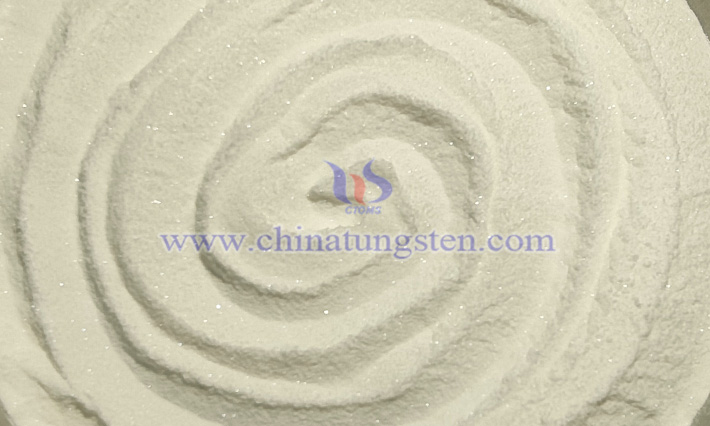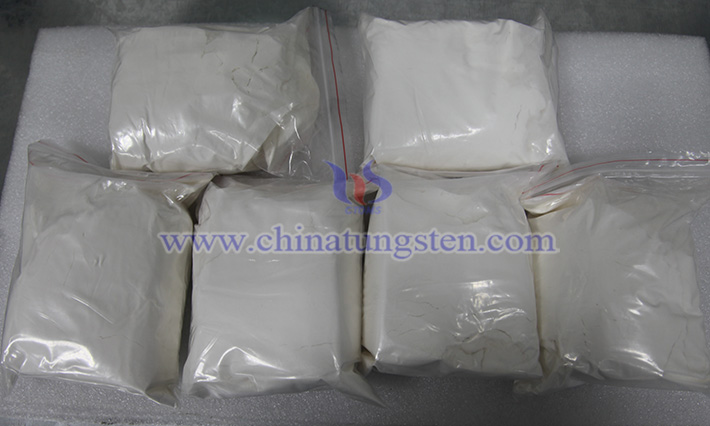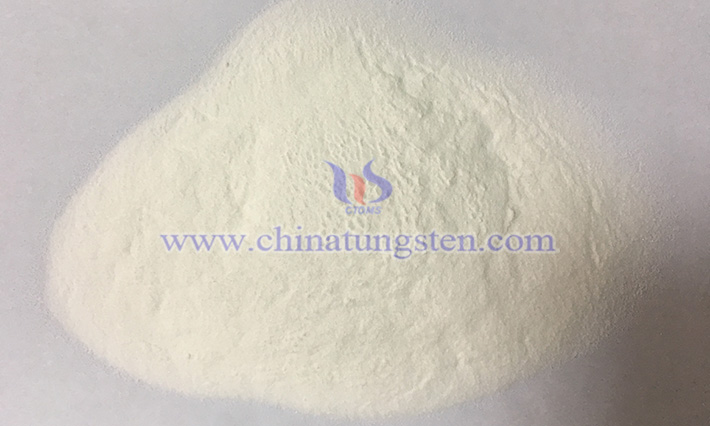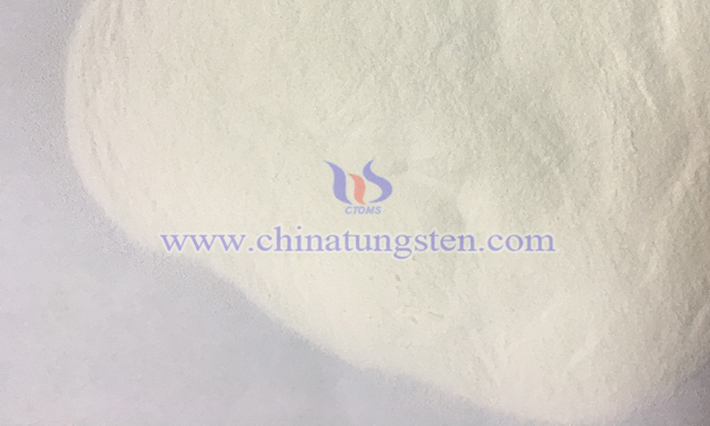Effect of Crystal Structure on the Properties of Ammonium Metatungstate
- Details
- Category: Tungsten Information
- Published on Wednesday, 23 April 2025 15:29
- Written by Xiaoting
- Hits: 252

Ammonium metatungstate (AMT), a critical compound of the transition metal tungsten, features a core structure based on the Keggin-type polyacid anion [H₂W₁₂O₄₀]⁶⁻. This anion is formed by 12 WO₆ octahedra connected through corner- or edge-sharing, creating a cage-like structure typically centered by a heteroatom or proton. Stabilized by NH₄⁺ cations and crystal water molecules, this polyoxoanion forms a three-dimensional crystal structure. AMT’s crystal structure is generally monoclinic or triclinic, depending on crystallization conditions such as temperature, pH, and solvent. The crystal structure significantly influences AMT’s properties, including solubility, thermal stability, catalytic performance, and chemical stability. Below is a detailed analysis of these impacts.
Read more: Effect of Crystal Structure on the Properties of Ammonium Metatungstate
Effect of Solution pH Value on the Crystal Structure of Ammonium Metatungstate
- Details
- Category: Tungsten Information
- Published on Wednesday, 23 April 2025 15:26
- Written by Xiaoting
- Hits: 252

The pH of the solution plays a critical role in the formation and stability of the crystal structure of Ammonium Metatungstate (AMT) produced by CTIA GROUP LTD. The crystal structure of AMT is centered around the Keggin-type polyacid anion [H₂W₁₂O₄₀]⁶⁻, and the pH directly influences the polymerization behavior of tungstate ions, which in turn affects the formation, chemical composition, and morphology of the crystals.
Read more: Effect of Solution pH Value on the Crystal Structure of Ammonium Metatungstate
What Is the Solubility of Ammonium Metatungstate?
- Details
- Category: Tungsten Information
- Published on Monday, 14 April 2025 11:18
- Written by Xiaoting
- Hits: 265

Ammonium metatungstate (AMT) and ammonium paratungstate (APT) produced by CTIA GROUP LTD are two critical intermediate compounds in tungsten chemistry. Their solubility directly impacts their applications in industrial production, catalyst preparation, and material processing. AMT stands out for its high water solubility across various fields, while APT’s lower solubility results in distinct differences in application scenarios.
Read more: What Is the Solubility of Ammonium Metatungstate?
What Are the Factors that Affect the Properties of Ammonium Metatungstate?
- Details
- Category: Tungsten Information
- Published on Wednesday, 23 April 2025 15:22
- Written by Xiaoting
- Hits: 249

Ammonium Metatungstate (AMT) is a critical tungsten compound primarily used in the production of tungsten powder, tungsten wire, tungsten alloys, and hard alloys. It finds extensive applications in electronics, aerospace, mechanical manufacturing, catalysis, and the chemical industry. The physicochemical properties of AMT, such as solubility, thermal stability, and catalytic performance, are influenced by factors including crystal structure, solution pH, preparation temperature, and other conditions.
Read more: What Are the Factors that Affect the Properties of Ammonium Metatungstate?
What Is the Crystal Structure of Ammonium Metatungstate?
- Details
- Category: Tungsten Information
- Published on Monday, 14 April 2025 11:14
- Written by Xiaoting
- Hits: 263

Ammonium metatungstate (AMT) produced by CTIA GROUP LTD is a crucial polynuclear tungstate compound with a complex yet highly ordered crystal structure. Centered around a Keggin-type polyoxoanion, it combines with ammonium cations and crystal water to form a stable lattice. This unique structure imparts AMT with exceptional physicochemical properties, making it widely applicable in fields such as catalysts, tungsten materials, and nanotechnology.
Read more: What Is the Crystal Structure of Ammonium Metatungstate?





 sales@chinatungsten.com
sales@chinatungsten.com